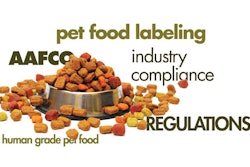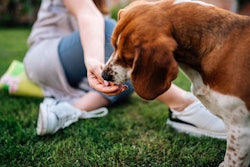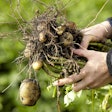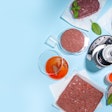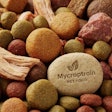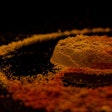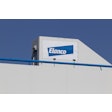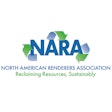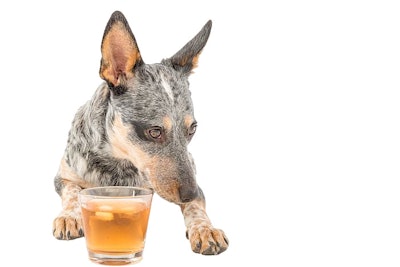
Leftovers from Scotch whisky distillation got another shot as nourishment for algae that scientists processed into a pet food ingredient. Algae grown on pot ale, a co-product of the liquor industry, could replace fish as a source of omega-3 fatty acids in both human and pet food, with potential ecological and economic benefits. Edinburgh-based MiAlgae developed a process for upcycling pot ale into algae alimentation.
MiAlgae recently made its first sale to a premium dog food company. While Ruairidh Henderson, general manager of MiAlgae, couldn’t share details, he said that the pet food brand was actively seeking an alternative to fish oil for the omega-3 fatty acids eicosapentaenoic acid (EPA) and docosahexaenoic acid (DHA). The pet food company wanted a fatty acid source that was ocean friendly and ethically sourced. Using algae to produce omega-3s could reduce pressure on marine ecosystems.
“Fish are not able to produce or synthesise omega-3,” he said. “They simply accumulate it from their food. We estimate 1 tonne of our algae saves around 30 tonnes of wild fish. In a similar way, pets can’t produce omega-3 either, so it is essential they consume them as part of a healthy, balanced diet. The company were aware that plant sourced omega 3 (alpha-linolenic acid, ALA) is not easily digested by pets.”
Omega-3 fatty acids play important roles in animal cell membranes, hearts, immune and endocrine systems and brains, along with other roles, according to the U.S. National Institutes of Health. Mammals, including dogs, cats and humans, can’t make omega-3 fatty acids, so we must consume them, but not all these chemicals are the same. Omega-3 fatty acids differ from each other in length, for one thing. Our bodies can turn smaller fatty acids into larger ones by extending the chain of amino acids that make up the fatty acids and by forging double bonds along the chain. For example, after a person eats a shorter chain omega-3 like ALA, the body can use the chemical to synthesize EPA and then DHA.
Potential to expand to other whiskey producing regions
MiAlgae’s process could be repeated in lands where whisky is spelled with an e, outside of Scotland.
“Pot ale is a nutrient rich mix of water, sugar and yeast,” Henderson said. “Pot ale is what remains in the copper still after the first distillation, once the alcohol has been evaporated and condensed to mature in casks. It takes around 10-15 liters of pot ale to produce one liter of whisky so there is a plentiful supply.
“We can use co-products from any distillation process and this includes American, Irish or even Japanese whisky,” he said. “We are also starting trials with beer and white-spirit producers and plans are underway for our US expansion...”
“We are always interested in other sources of clean waste for nutrient recycling, this could essentially derive from any food and drink manufacturing process.”
Environmental and economic aspects of algae from whiskey co-product
Scotland’s environment, and the rest of the planet, could benefit from using a co-product of the nation’s most iconic beverage.
“We’re effectively taking a problem for one of Scotland’s biggest industries (whisky) and turning into a solution for others (pet food and salmon farming),” he said. “Pet food is a higher value market for us but as our production increases we need to look to higher volume markets like aquaculture.”
Henderson listed these benefits for the whisky industry:
- Reduced waste and water usage by distillers – MiAlgae’s process removes the dissolved solids meaning the water can be reused in process.
- Increased value from whisky co-products that were otherwise spread on fields, discharged into the ocean or sent to an anaerobic digester.
- Reduction of harmful algal blooms at sea caused by industrial and agricultural run off.
- Treating and dewatering the co-product at source reduces transit miles to point of disposal.
Benefits for aquaculture and pet food:
- Reduced costs of raw ingredients - Instead of shipping fish oil and meal from South America, it is produced at the distillery up the glen in Scotland.
- Reduced carbon footprint
- Reduced impact on the environment by leaving the wild forage fish (anchovies and sardines) in the ocean
- Reduced build up of heavy metals and dioxins as algae are at the bottom of the food chain.
- Vegan alternative




